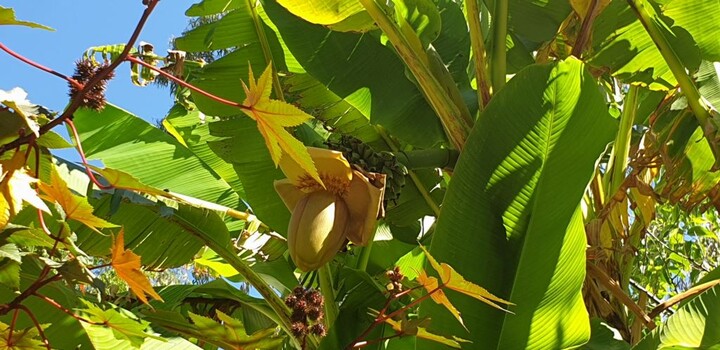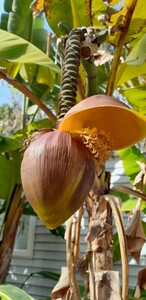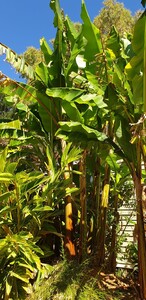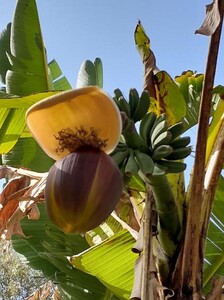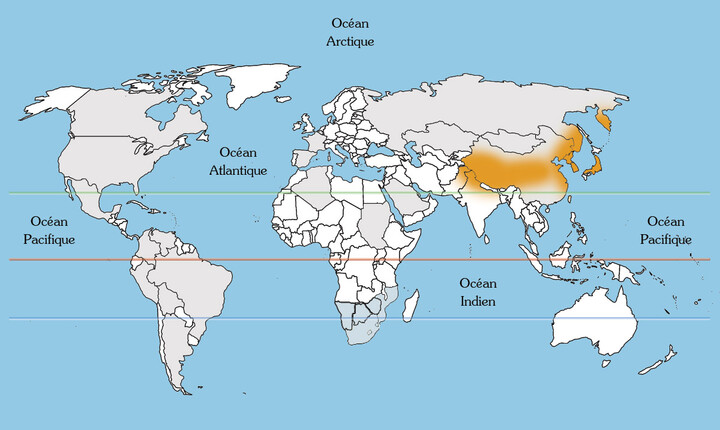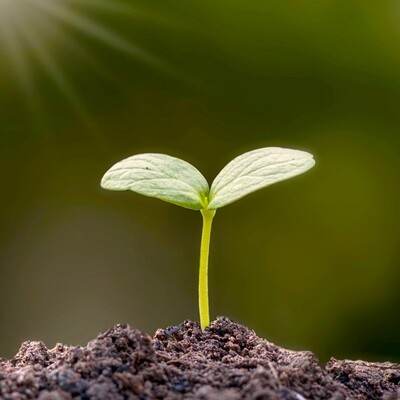Japanese Banana
Presentation
An exotic beauty
Planted along the botanical footpath of our four-star campsite Les Jardins de La Pascalinette ®, the Japanese Banana is mainly used for ornamental purposes. We appreciate its rapid growth and exotic allure, which adds an undeniably captivating touch to our gorgeous campsite.
Originating from the forests of Japan, this banana variety is one of the most resistant to cold, even though the climate at our seaside campsite is generally very mild.
The Japanese Banana plant behaves differently depending on where it is planted: its foliage is evergreen in warm climes such as the Côte d’Azur, but deciduous in cold climes.
It is relatively rustic and one of the only varieties of banana plant that can be grown in our geographic area. But beware: it must be sheltered from the wind, which sadly tends to tear its wide leaves. Like all perennial plants, the Japanese Banana hibernates in winter and its aerial parts dry up and die off.
The Japanese Banana: a giant grass!
The Japanese Banana grows very fast and can easily reach up to 4 metres in height and circumference. Holidaymakers staying with us as the end of summer will be able to admire its large, brown bracts bearing little, tubular, white or pale yellow flowers. They are followed by small fruits (3 to 6 cm) which are edible but have a disagreeable taste. We recommend you do not eat them.
Similarly to the palm tree, the Japanese Banana has a stalk rather than a trunk. Its stalk is actually composed of the superimposed stalks of each leaf, forming a pseudo-trunk. The banana tree is therefore a member of the herbaceous family!
You will find the Japanese Banana in our exotic grounds, at nr. 21 on the botanical footpath plan.

